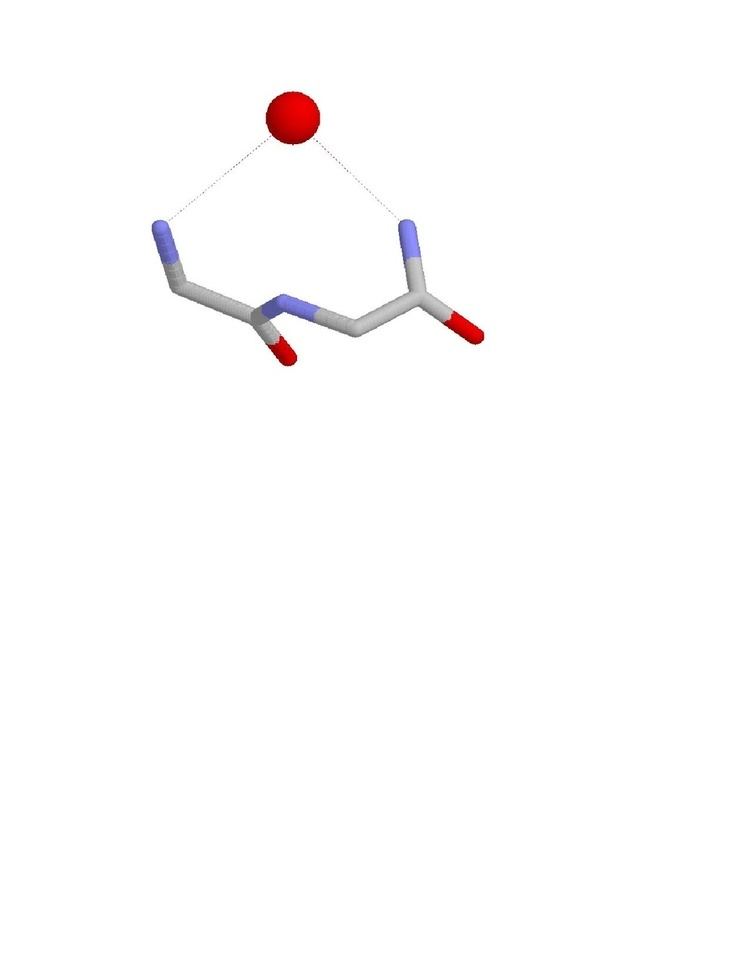 | ||
The Nest is a type of protein structural motif. Peptide nests are small anion-binding molecular features of proteins and peptides. Each consists of the main chain atoms of three consecutive amino acid residues. The main chain NH groups bind the anions while the side chain atoms are often not involved. Proline residues lack NH groups so are rare in nests. About one in 12 of amino acid residues in proteins, on average, belongs to a nest.
Contents
Nest conformations
The conformation of a nest is such that the NH groups of the first and third amino acid residues are liable to be hydrogen bonded to a negatively charged, or partially negatively charged, atom, often an oxygen atom. The NH of the second residue may also be hydrogen bonded to the same atom but usually points somewhat away. These main chain atoms form a concavity called a nest into which an anionic atom fits. Such anionic atoms are sometimes called eggs and more than one egg may occur bound to a nest. The oxyanion hole of the intestinal serine proteases is a functional example of a nest. Another occurs in the antibiotic peptide vancomycin which binds a key carboxylate group needed during bacterial cell wall synthesis, thereby preventing the cells from multiplying.
Nests are defined by the conformation of the main chain atoms, namely the phi,psi dihedral angles of the first two amino acids in the nest. For a typical (RL) nest phii=-90°; psii=0°; phii+1=80°; psii+1=20°. Nests vary in their degree of concavity. A few have so little that the concavity is lost. Such peptides are less liable to act as anion binding sites. The specificity filter of the potassium channel and the channel of aquaporin exhibit this more linear conformation in which the carbonyl groups are employed by proteins to transport molecules across membranes. This near-linear conformation is also that found in a strand of alpha sheet
Compound nests
If two nests overlap such that residue i+1 of the first nest is residue i of the second nest, a compound nest is formed. This has four NH groups instead of three. If three nests overlap such that residues i+1 and i+2 of the first nest are both residue i of a nest, a wider compound nest is formed with five NH groups, and so on. The main chain atoms form part of a ring with the NH groups all pointing roughly inwards, towards the centre of the ring. Because their concavities are often wider than simple nests, compound nests are commonly employed by proteins for binding anions such as phosphates, as in the P-loop or Walker motifs, and in iron-sulphur clusters.
Types of nest
Simple nests are of two kinds called RL and LR depending on the sign of the phi angles of the first two nest residues. R residues have negative phi values (as in right-handed alpha-helices) and L residues have positive phi values (as in the left-handed alpha helix). Eighty percent of nests are RL and 20% are LR. When two nests overlap they may be RLR or LRL. When three nests overlap they may be RLRL or LRLR, and so on.
Every Schellman loop incorporates an RL nest in the last three of its six residues. The nest binds carbonyl oxygen atoms preceding it in sequence.
A number of antibody proteins have RLR nests within the hairpin loops of their H-chain CDRs (complementarity determining regions) bound to a carboxylate side chain. These have been engineered to give rise to monoclonal nest-containing antibodies specific for proteins with phosphorylated serines and threonines.
